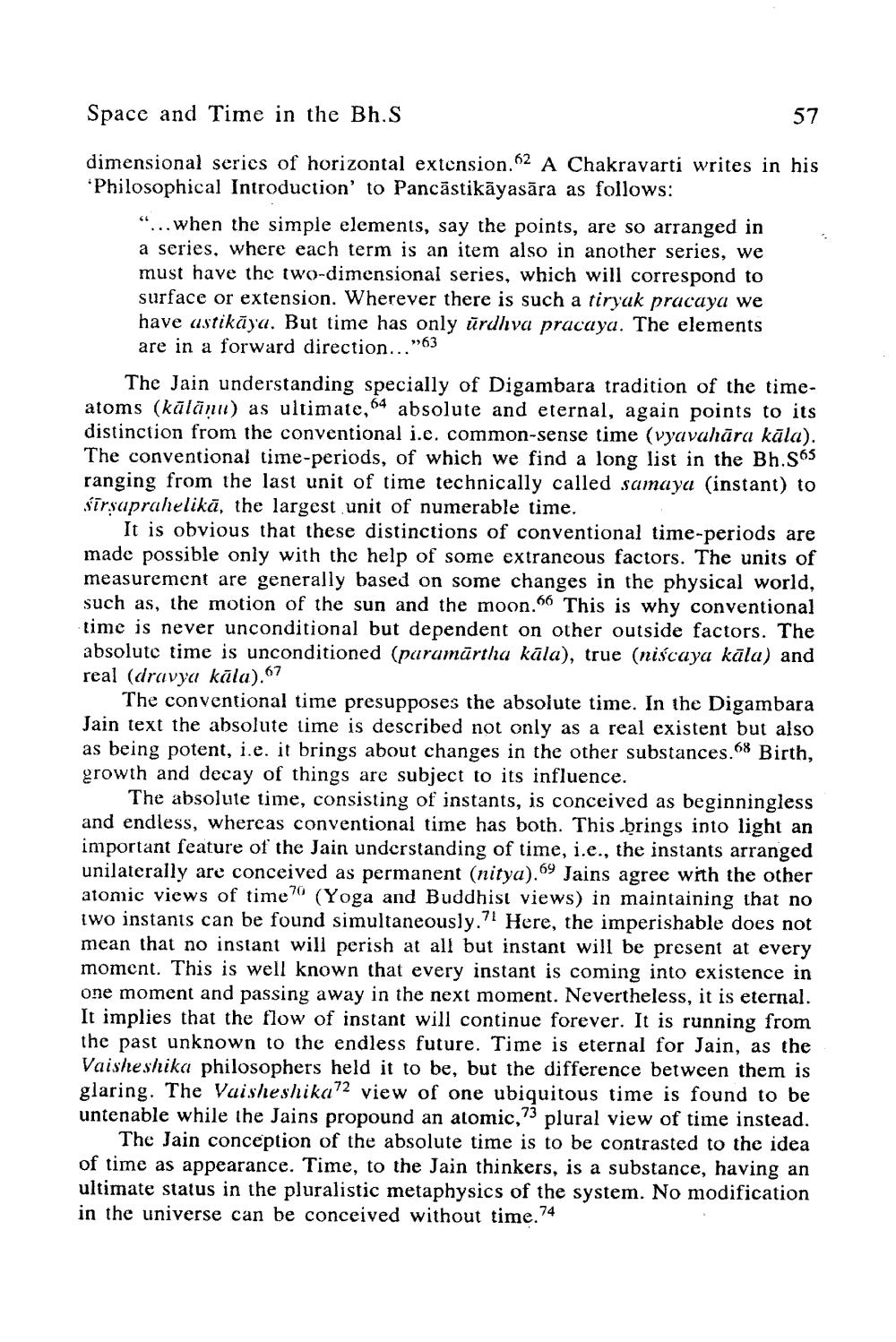________________
57
Space and Time in the Bh.S
dimensional series of horizontal extension.62 A Chakravarti writes in his 'Philosophical Introduction' to Pancästikäyasara as follows:
"...when the simple elements, say the points, are so arranged in a series, where each term is an item also in another series, we must have the two-dimensional series, which will correspond to surface or extension. Wherever there is such a tiryak pracaya we have astikāya. But time has only urdhva pracaya. The elements are in a forward direction..."63
The Jain understanding specially of Digambara tradition of the timeatoms (kālāņu) as ultimate,64 absolute and eternal, again points to its distinction from the conventional i.c. common-sense time (vyavahāra kāla). The conventional time-periods, of which we find a long list in the Bh.S65 ranging from the last unit of time technically called samaya (instant) to sirṣaprahelika, the largest unit of numerable time.
It is obvious that these distinctions of conventional time-periods are made possible only with the help of some extraneous factors. The units of measurement are generally based on some changes in the physical world, such as, the motion of the sun and the moon.66 This is why conventional time is never unconditional but dependent on other outside factors. The absolute time is unconditioned (paramartha kāla), true (niscaya kāla) and real (dravya kāla),67
The conventional time presupposes the absolute time. In the Digambara Jain text the absolute time is described not only as a real existent but also as being potent, i.e. it brings about changes in the other substances." 68 Birth, growth and decay of things are subject to its influence.
71
The absolute time, consisting of instants, is conceived as beginningless and endless, whereas conventional time has both. This brings into light an important feature of the Jain understanding of time, i.e., the instants arranged unilaterally are conceived as permanent (nitya).69 Jains agree with the other atomic views of time70 (Yoga and Buddhist views) in maintaining that no two instants can be found simultaneously. Here, the imperishable does not mean that no instant will perish at all but instant will be present at every moment. This is well known that every instant is coming into existence in one moment and passing away in the next moment. Nevertheless, it is eternal. It implies that the flow of instant will continue forever. It is running from the past unknown to the endless future. Time is eternal for Jain, as the Vaisheshika philosophers held it to be, but the difference between them is glaring. The Vaisheshika72 view of one ubiquitous time is found to be untenable while the Jains propound an atomic,73 plural view of time instead.
The Jain conception of the absolute time is to be contrasted to the idea of time as appearance. Time, to the Jain thinkers, is a substance, having an ultimate status in the pluralistic metaphysics of the system. No modification in the universe can be conceived without time.74




